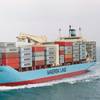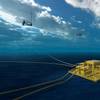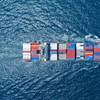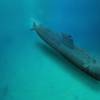By John Joyce, NSWC Dahlgren Corporate Communications
The Navy took another step to increase ships' capabilities against asymmetric surface threats, as the Shipboard Protection System (SPS) completed its first pierside and underway test events aboard the USS Benfold (DDG 65) on Feb. 26.
The SPS provides a ship’s commander with organic tools to rapidly assess emerging surface threats and defend against terrorist attacks like the one that severely damaged the USS Cole in 2000. Ultimately, most U.S. naval surface vessels will have an SPS to provide integrated anti-terrorism/force protection capabilities while operating in littoral waters including foreign or domestic ports, restricted waterways and coastal areas, where terrorists can pose a significant threat to naval vessels.
USS Benfold is the first ship outfitted with SPS (Block 1 version), which integrates AN/SPS 73 Surface Search Radar with twin electro-optical/infrared cameras to detect and identify threats from high-speed seaborne small craft. The Block III configuration will incorporate the ability to warn and engage short range surface threats.
U.S. Fleet Forces Command identified the threat of small boat terrorist attacks to moored ships and ships entering harbors. During these situations the use of blue water combat systems might endanger non-combatants. The Chief of Naval Operations recognized this need and created the SPS program to improve force protection for Navy surface units.
The Program Executive Officer for Littoral and Mine Warfare (PEO LMW), supported by Naval Sea Systems Command (NAVSEA), was tasked to deliver this capability to the Fleet. In order to meet established schedule and cost constraints, PEO LMW turned to the Naval Surface Warfare Centers (NSWCs) for assistance.
“The opportunity for the NSWCs to develop and install SPS demonstrates the confidence and trust the NAVSEA and Program Executive Offices have in NAVSEA field activities,” said NSWC Dahlgren Division commander Capt. Sheila Patterson. “It reinforces the warfare centers as leaders in providing the fleet and warfighter with significant technology that increases the superiority of our forces to fight the global war on terrorism.”
Six civilian engineers from NSWC Dahlgren and NSWC Crane Divisions got underway aboard USS Benfold, working with the ship's force to execute a variety of demanding scenarios to exercise and characterize SPS Block I performance.
“The installation went very smoothly," said Cmdr. Andrew Hesser, USS Benfold's commanding officer. "This system has received a lot of attention. I look forward to assessing its capabilities over the next several months."
"Once fully integrated into the ship's fighting doctrine, SPS will give us much better situational awareness," said Lt. Steingrube, USS Benfold's weapons officer. "It will take much of the guess work out of a contact's distance, and will help us to better assess a potential threat's intentions."
"The situational awareness of a bridge crew's surroundings is multiplied with SPS,” added Paul Ottavio, NSWC Dahlgren SPS systems engineer. “With this new capability comes far greater action and reaction time to engage potential enemy threats.”
Pending a fielding decision in April 2008, the SPS Project Team will begin to install SPS Block I aboard USS Laboon (DDG 58) in July and USS Oscar Austin (DDG 79) in August 2008. The initial Block 3 installation is scheduled for October 2008. Upon successful completion of operational evaluation, the SPS will be integrated and installed in other fleet ship classes.
The NSWC SPS Team is comprised of ten work groups ranging from systems engineering and human systems integration to integrated logistics support and shipboard installation and integration.
The groups – led by NSWC Dahlgren and NSWC Crane subject matter experts – are responsible for executing work assignments which involve continuous communication, coordination and collaboration in order to develop the technical products within schedule and budget.
Featured videos

Taking the First Step Toward Autonomy

Send in the Drones (to deep, dark, confined maritime spaces)
Subscribe for
Maritime Reporter E-News
Maritime Reporter E-News is the maritime industry's largest circulation and most authoritative ENews Service, delivered to your Email five times per week











